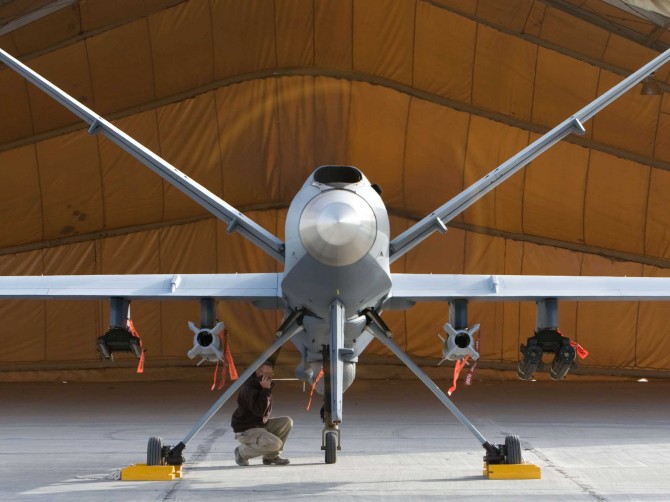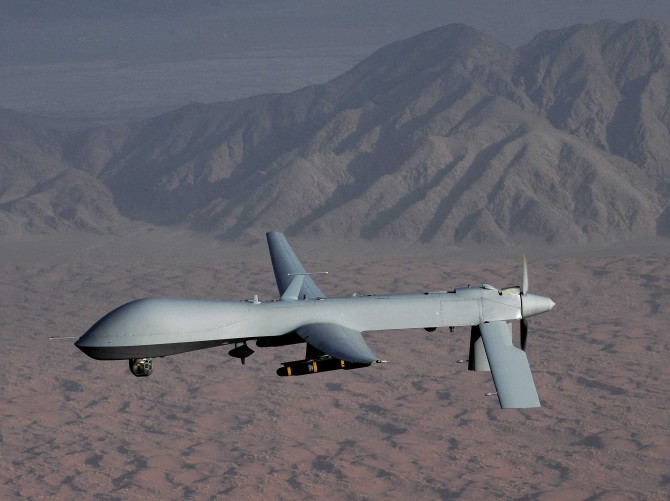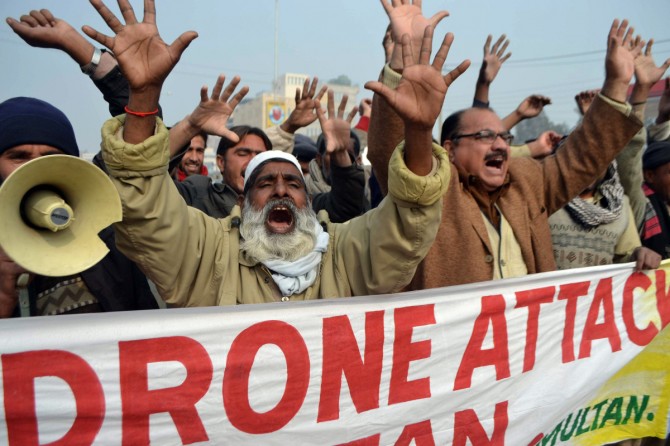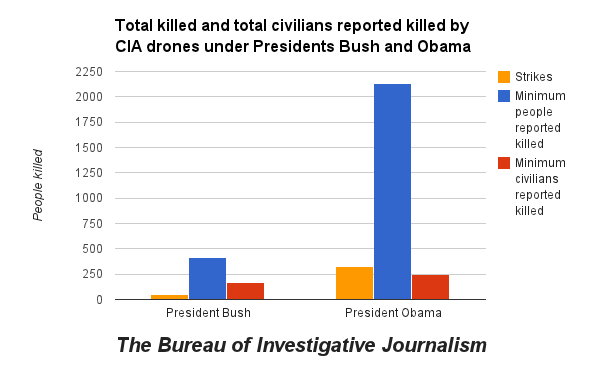Just the term “drone” has an eerily clandestine Orwellian feel about it. Faceless deadly war machines floating high above civilians and terrorists alike, reigning down fury from afar. The idea of unmanned weapon carriers is unpopular, but as far as the military are concerned they minimise financial costs and more importantly human cost for the home team.
The recipients of these gifts from above aren’t quite as keen on them though.
The Birth Of Drones

In 1973 Israel utilised an unmanned aircraft in a war situation for the first time. They used a radio controlled drone to draw Egyptian fire. The drone had no weapons of its own, but it spurred the Egyptians to waste a lot of fire power which Israel later capitalised on.
The late 1980’s saw the first use of an unmanned and armed air vehicle. Iran deployed a drone in the Iran-Iraq war to devastating effect.
The US military witnessed Israel’s use of the drone and liked what it saw. In the ever depersonalised game of war, drones were ideal; a craft that can be controlled from hundreds of miles away and destroy humans at the flick of a switch is a perfect fit.
Since the 80’s the use of drones by the US (and other countries to a lesser extent) has literally sky rocketed.
Drone Controversy

Some independent observers argue that the ability to push a button in an office many miles away from a target limits the human involvement and leads to rash decisions and clumsy killing. The opposite side argue that the operators of these drones actually monitor their targets from a close range, observe their movements, their personal interactions and their lives before the time comes to terminate them. Here’s a quote from one of the operators…
The smoke clears, and there’s pieces of the two guys around the crater. And there’s this guy over here, and he’s missing his right leg above his knee. He’s holding it, and he’s rolling around, and the blood is squirting out of his leg … It took him a long time to die. I just watched him.
And here’s an opinion from Professor French, an expert in the psychology of war:
If [I’m] in the field risking and taking a life, there’s a sense that I’m putting skin in the game … I’m taking a risk so it feels more honorable. Someone who kills at a distance–it can make them doubt. Am I truly honorable?
Whether the psychological impact is better or worse and whether the human impact on the ground is better or worse is up for debate. But the people on the ground have already made their decision. They don’t like drones because they kill their babies.
Who’s Getting Hit?

The US has used drones most significantly in Pakistan, Yemen and Somalia. What’s most worrying is the level of secrecy of these missions. Of course it makes sense for high level military manoeuvres to be secretive, but these attacks are regular and little is reported about them through public channels. In fact the Obama administration, although defending their legality, doesn’t even admit the drone war is going on at all.
The shadowy elite force called Joint Special Operations Command carries out the majority of these drone attacks and under Obama’s rule the drones keep on coming. Pakistan are seeing fewer hits (100 in 2008, 46 in 2012), but Yemen are picking up the slack with more than 40 last year.
Here’s a graph showing death toll stats in Pakistan, the country worst hit:

First hand account of a drone attack on the next page…















